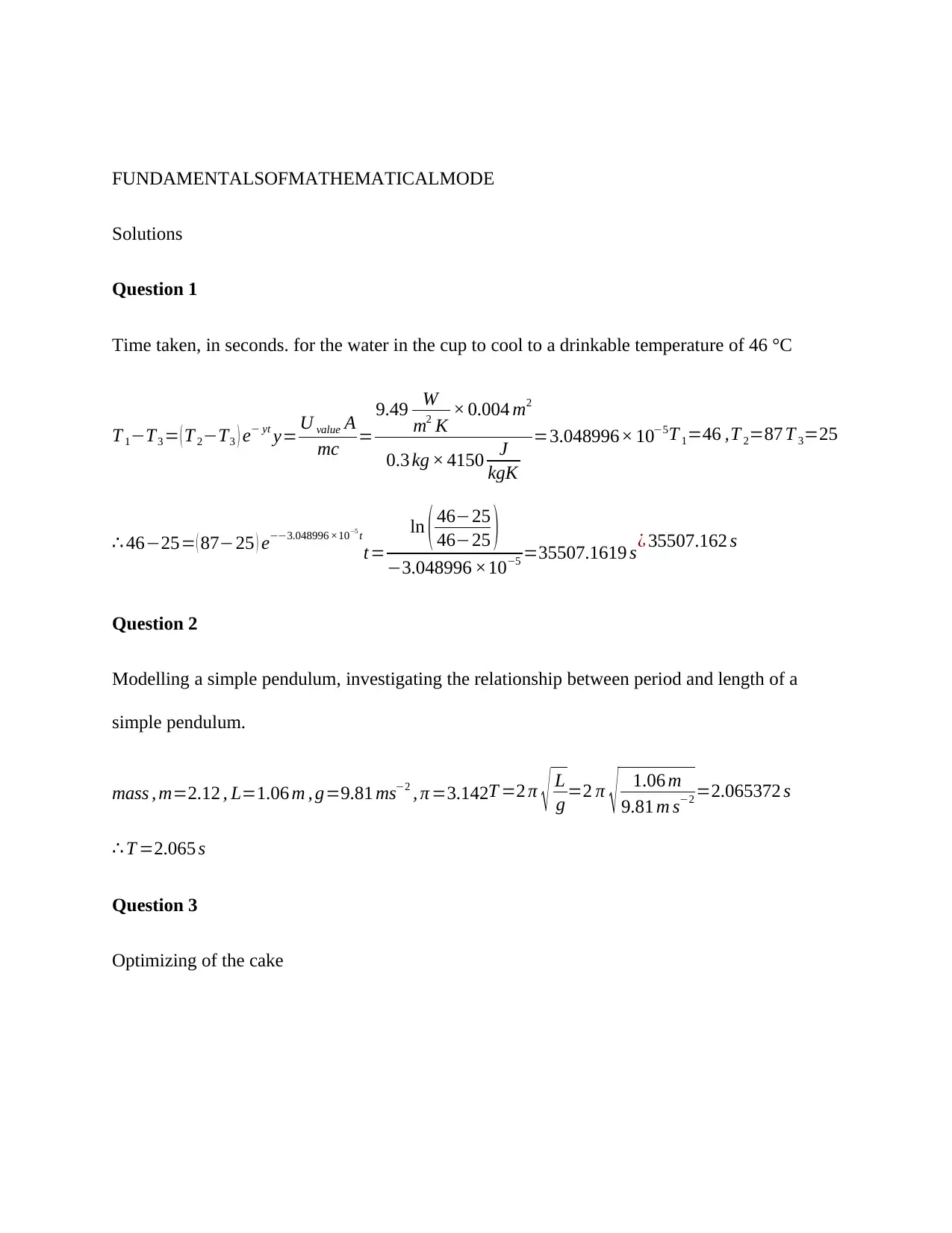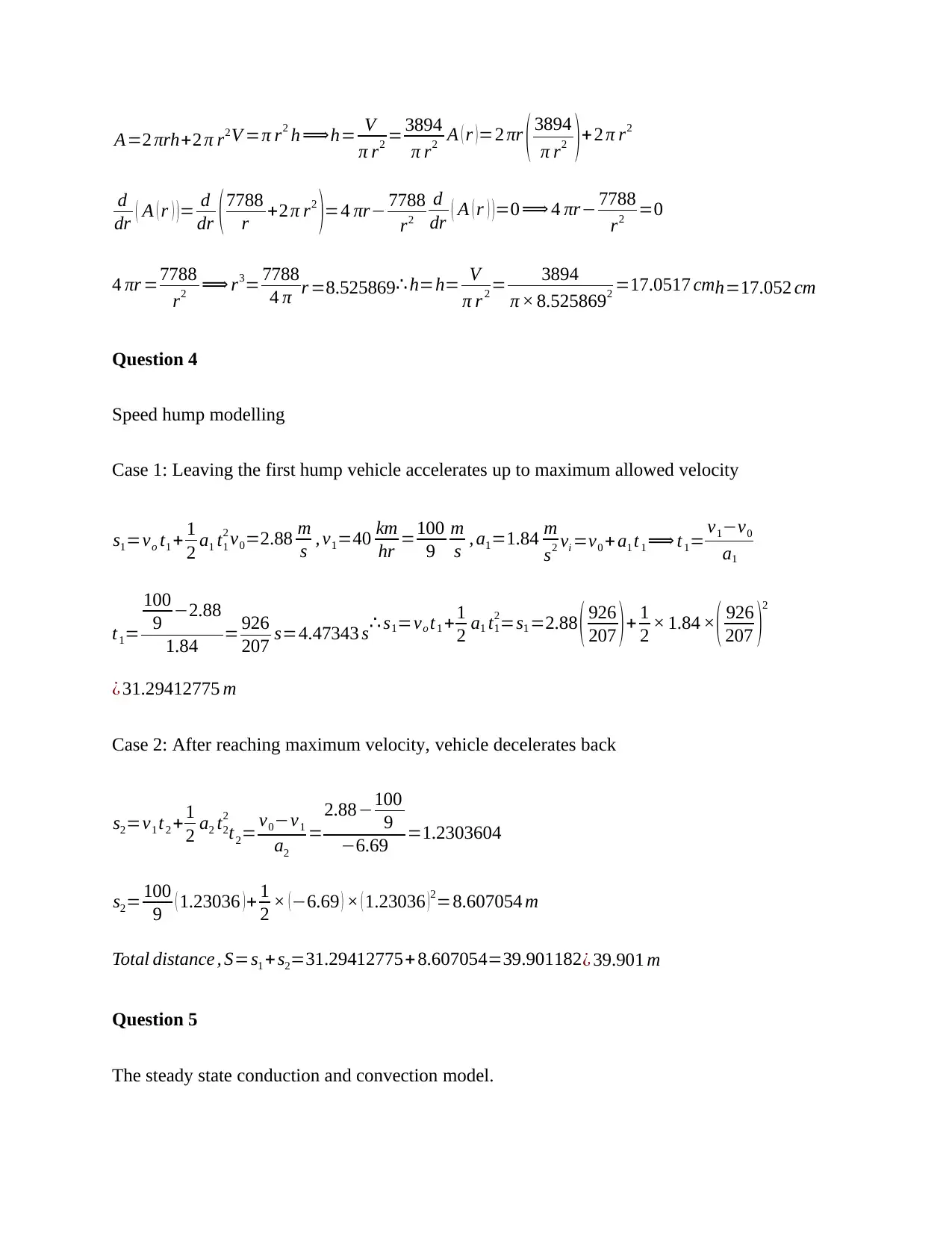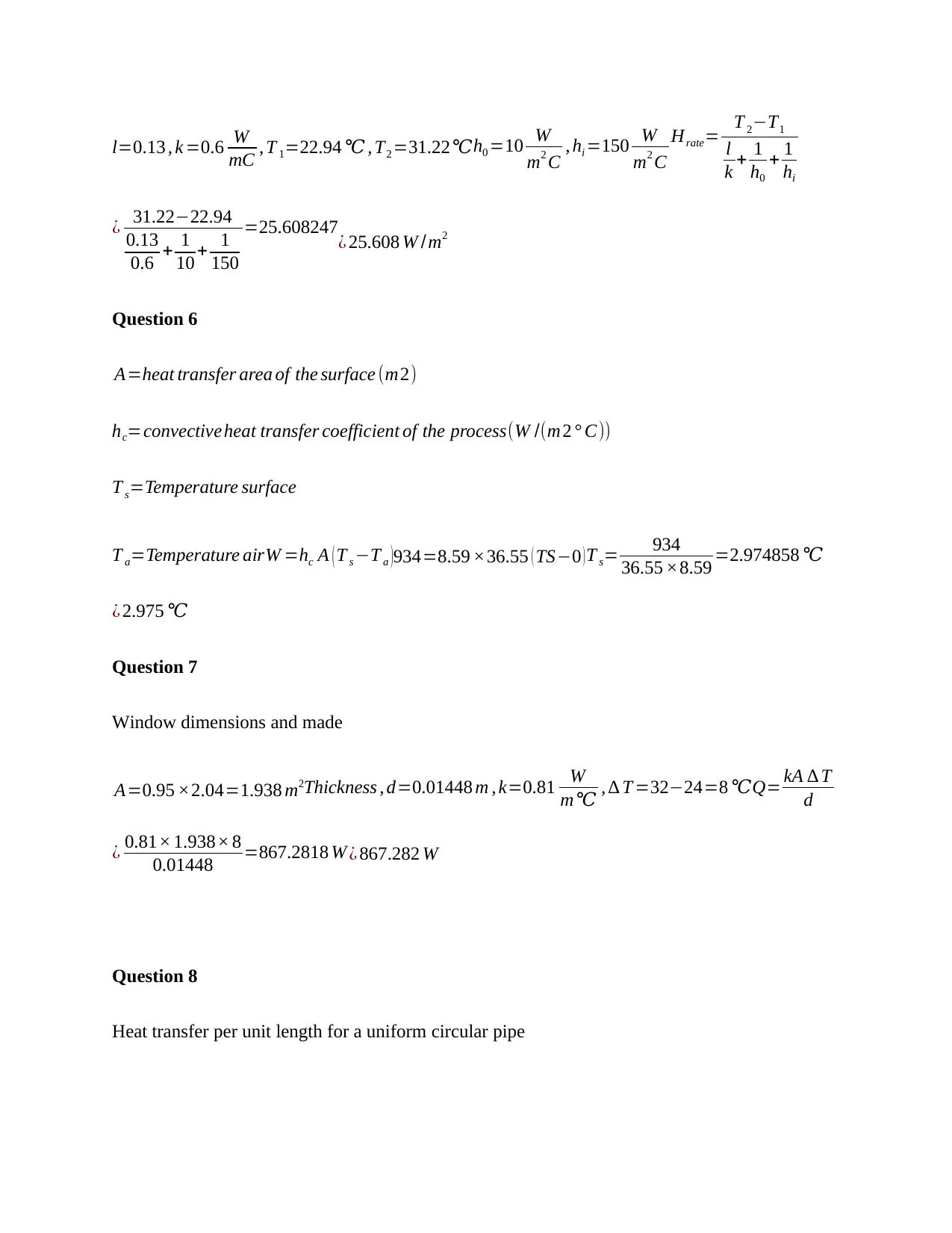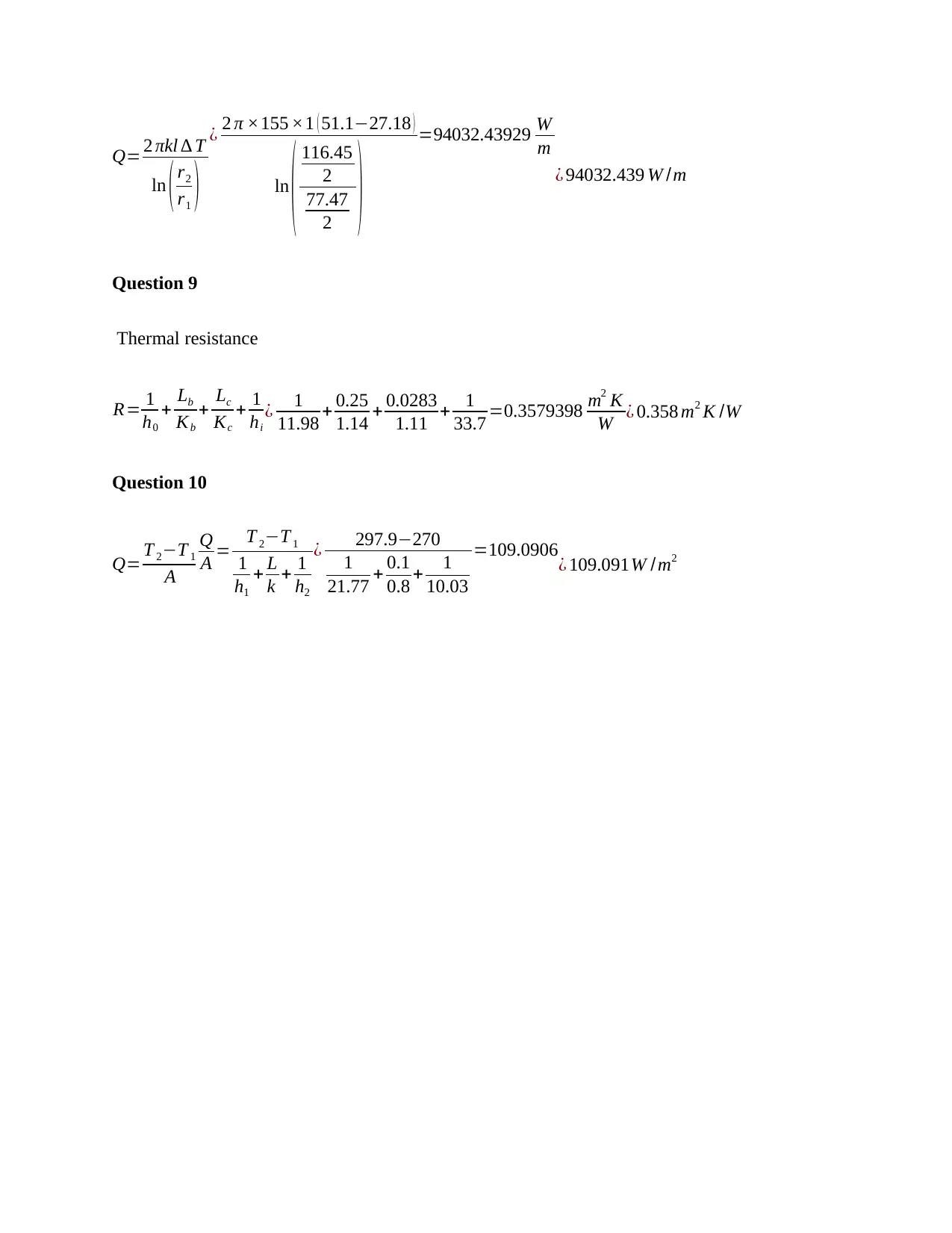Fundamentals of Mathematical Modeling Solutions: Complete Assignment
VerifiedAdded on 2023/01/19
|4
|699
|62
Homework Assignment
AI Summary
This document contains solutions to a mathematical modeling assignment, addressing ten different problems. The solutions cover a range of topics including the cooling of water, modeling a simple pendulum, optimizing a cake, analyzing a speed hump, modeling steady-state conduction and convection, calculating heat transfer based on surface temperature and air temperature, determining heat loss through a window, calculating heat transfer in a circular pipe, calculating thermal resistance, and determining heat transfer based on temperature differences and material properties. Each solution is presented with the relevant formulas, calculations, and final answers, providing a comprehensive guide to solving these mathematical modeling problems.
1 out of 4









![[object Object]](/_next/static/media/star-bottom.7253800d.svg)